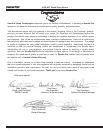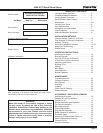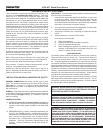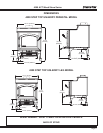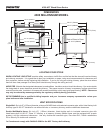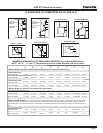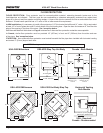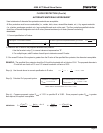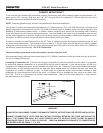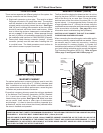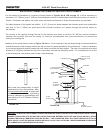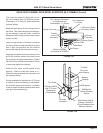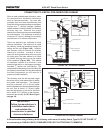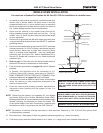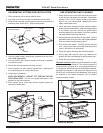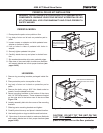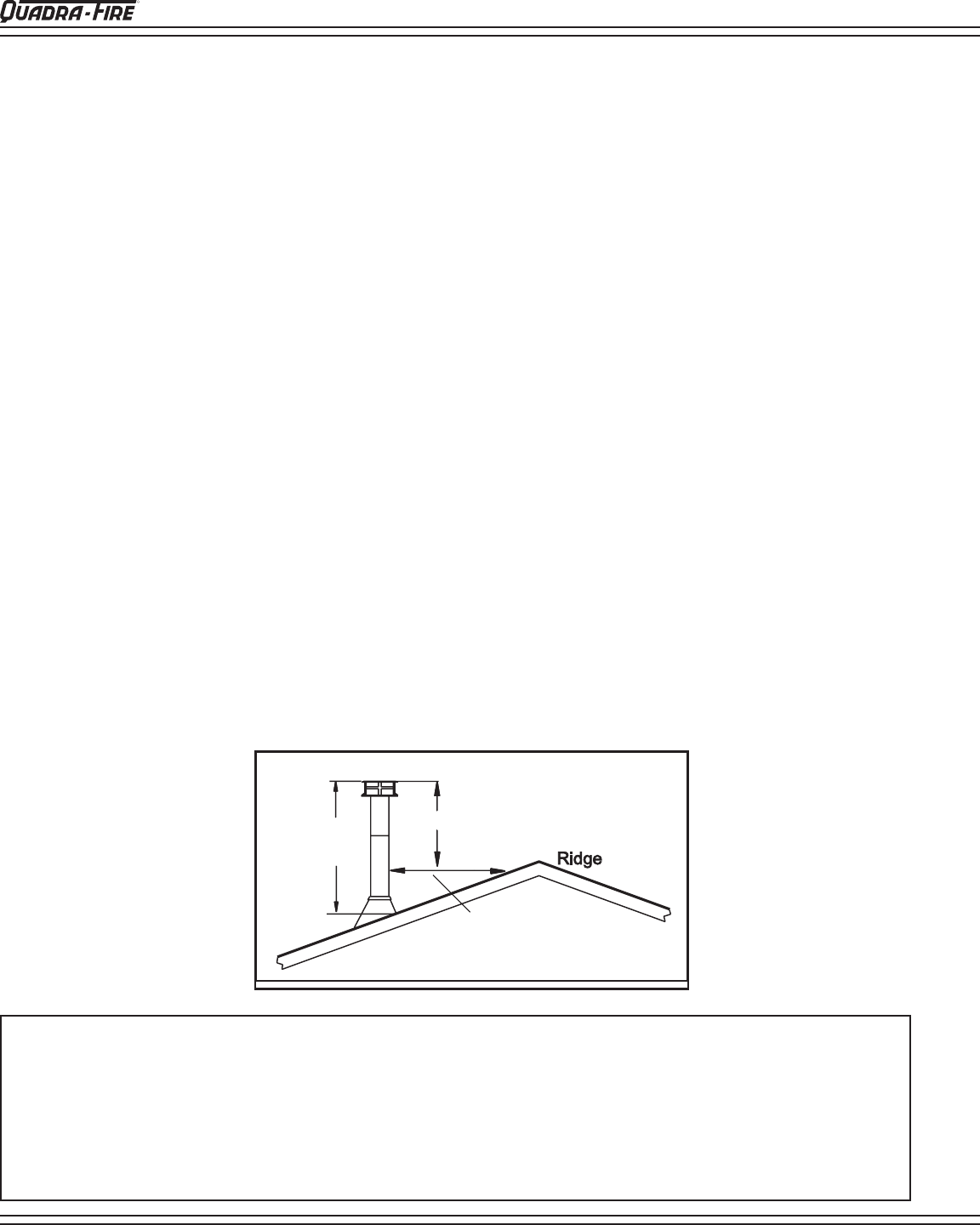
4300 ACT Wood Stove Series
Page 10 250-7061C December 10, 2004
R
To be sure that your Quadra-Fire stove burns properly, the chimney draft (static pressure) should be approximately -.10”
water column (W.C.) during a high burn and -.04” W.C. during a low burn, measured 6” (152mm) above the top of the
stove after one hour of operation at each burn setting.
NOTE: These are guidelines only, and may vary somewhat for individual installations.
Your Quadra-Fire stove was designed for and tested on a 6” (152mm) chimney, 12 ft.-14 ft. (360-420cm) high, (includes stove
height) measured from the base of the stove. The further your stack height or diameter varies from this configuration, the
possibility of performance problems exists. In addition, exterior conditions such as roof line, surrounding trees, prevailing
winds and nearby hills can influence stove performance. Your local dealer is the expert in your geographic area and can
usually make suggestions or discover solutions that will easily correct your flue problem, allowing your woodstove and its
flue system to operate correctly and provide safe and economical heat for your home.
A masonry chimney or a listed factory-built UL103 HT Class “A” chimney must be the required height above the roof and
any other nearby obstructions. The chimney must be at least 3 ft. (91cm) higher than the highest point where it passes
through the roof and at least 2 ft. (61cm) higher than the highest part of the roof or structure that is within 10 ft. (305cm) of
the chimney, measured horizontally. See 2-10-3 Rule below.
These are safety requirements and are not meant to assure proper flue draft.
We recommend using a minimum total system height of 12 ft. (360cm), measured from the flue collar to the top of the chim
-
ney (not including chimney cap).
3 ft Min
(91cm
)
2 ft Min (61cm
)
10 ft Mi
n
(305cm
)
2-10-3 RULE
WARNING!
ALWAYS FOLLOW CHIMNEY CONNECTOR MANUFACTURER’S INSTRUCTIONS FOR PROPER INSTALLATION.
CHIMNEY CONNECTOR IS TO BE USED ONLY WITHIN THE ROOM, BETWEEN THE STOVE AND CEILING OR
WALL. THE CONNECTOR SHALL NOT PASS THROUGH AN ATTIC OR ROOF SPACE, CLOSET OR SIMILAR
CONCEALED SPACE, OR A FLOOR, OR CEILING. MAINTAIN MINIMUM CLEARANCES TO COMBUSTIBLES
AS REFERENCED ON PAGES 7, 8, 9, &10.
CHIMNEY HEIGHT/DRAFT
Availability of combustion air: A source of air (oxygen) is necessary in order for combustion to take place. It is important
to realize that whatever combustion air is consumed by the fire must be replaced. If you are using room air, the air is
replaced via air leakage that occurs around windows and under doors, etc. However, in most newly constructed houses,
mobile homes, or even existing homes that are fitted with tightly sealed doors and windows, the area from which the
combustion air is taken is relatively air tight. In these cases, an outside air source must be made available to feed
combustion air from outside the home into the stove. An Outside Air Kit is available for your stove as an option, Part
831-1780. The kit is a requirement for mobile home installations. Check with the local authorities in your area for
the requirements in your location.



